What Are the 5 C’s of Screen Time?
In today’s hyper-connected world, managing screen time isn’t just about counting hours—it’s about making those hours meaningful. Whether you're a parent guiding your child or someone simply trying to strike a healthier tech-life balance, the 5 C’s of screen time offer a smarter, more holistic approach to understanding digital habits.
Let’s dive into what these 5 C’s are and how they can transform your relationship with screens:
1. Content: What Are You Watching or Doing?
Not all screen time is created equal. Watching a mindless video is different from learning a new language through an app.
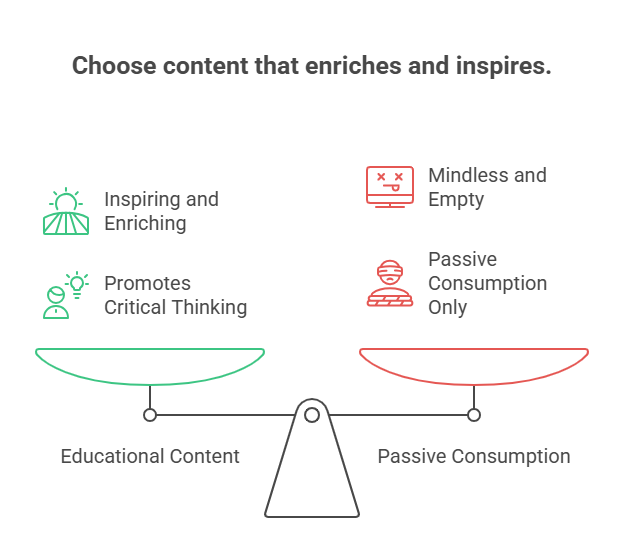
1. Content: What Are You Watching or Doing?
Ask yourself:
- Is this content educational, inspiring, or enriching?
- Is it age-appropriate for kids?
- Does it promote critical thinking or creativity?
Tip: Encourage content that supports growth—like documentaries, skill-building games, or storytelling apps—and limit those that offer nothing but passive consumption.
2. Context: When and Where Are You Using Screens?
Screens affect us differently based on the context in which they’re used.
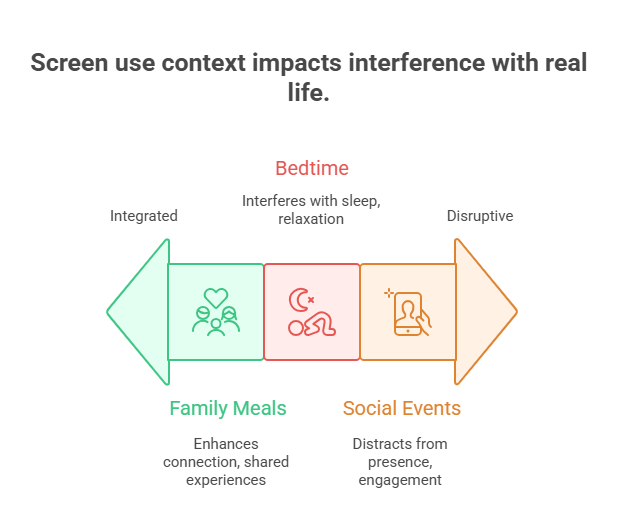
2. Context: When and Where Are You Using Screens?
Consider:
- Is the screen being used during family meals, bedtime, or social events?
- Is it replacing physical activity or real-life interaction?
Tip: Set tech-free zones or screen-free times (like during meals or 30 minutes before sleep) to keep screen use from interfering with important moments.
3. Child (or Consumer): Who Is the User?
Different people respond to screens in different ways, especially children. Personality, age, maturity, and even mental health play a role.
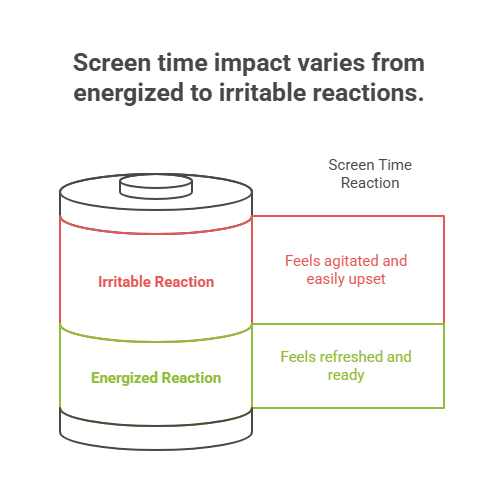
3. Child (or Consumer): Who Is the User?
Ask:
- Is this screen activity tailored to the individual’s age and needs?
- How does this person react after screen use—energized or irritable?
Tip: Observe behavior before and after screen time. Adjust based on emotional, cognitive, or behavioral reactions.
4. Consistency: How Balanced Is the Usage?
It’s not just about how much—but how regular and predictable—your screen habits are. Routine helps manage expectations and reduce dependency.
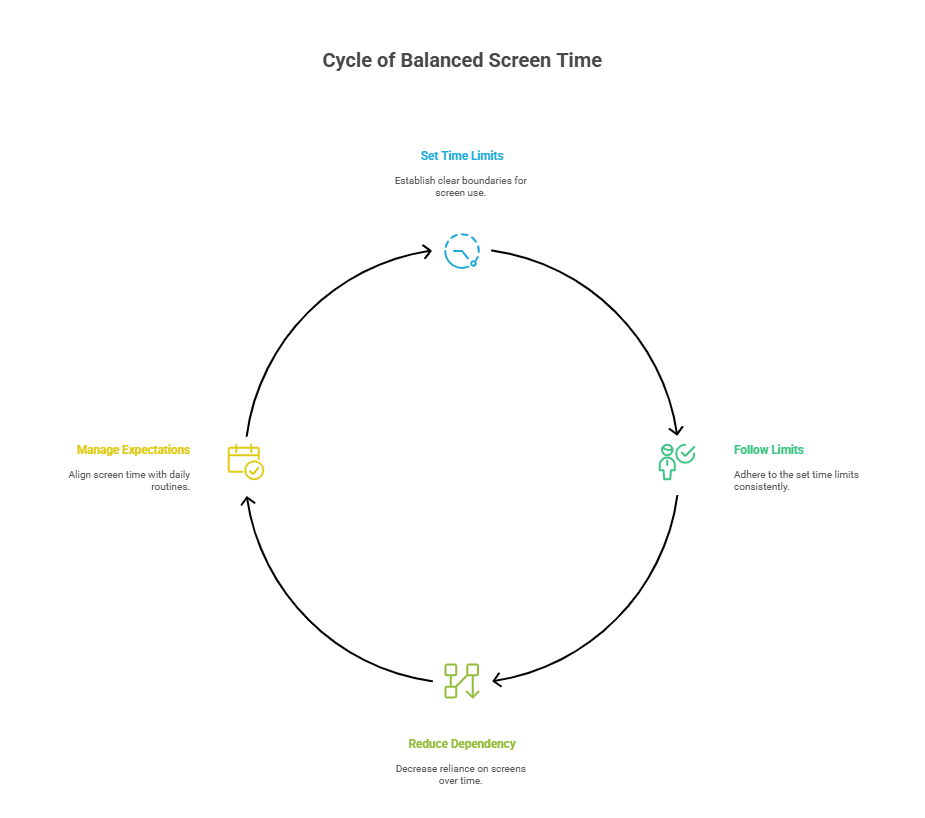
4. Consistency: How Balanced Is the Usage?
Ask:
- Is screen time part of a balanced daily routine?
- Are there consistent rules in place?
Tip: Set predictable time limits and follow them. For kids, use visual timers or schedules so they know when screen time starts and ends.
5. Communication: Are You Talking About It?
Screen time should be an open conversation, not a secret habit. Talking about digital behavior promotes awareness, accountability, and connection.
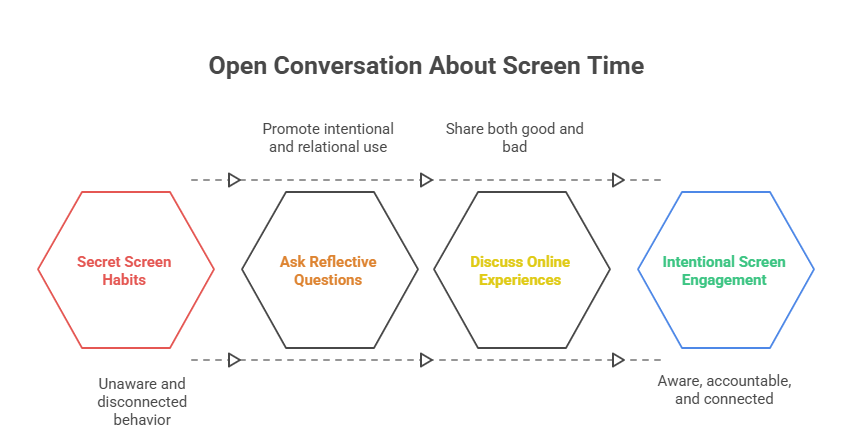
5. Communication: Are You Talking About It?
Ask:
- Do you (or your child) reflect on what’s being watched, played, or read?
- Can you discuss online experiences openly—both the good and the bad?
Tip: Use screen time as a springboard for conversations: “What did you learn?” or “How did that video make you feel?” helps make screen use intentional and relational.
Final Thoughts: The 5 C’s as Your Digital Compass
Managing screen time isn’t about rigid control—it’s about awareness, balance, and intention. The 5 C’s—Content, Context, Child/Consumer, Consistency, and Communication—help shift the focus from restriction to reflection.
Whether you're parenting in the digital age or curating your own screen habits, these five pillars serve as a compass toward healthier, more meaningful tech use.
📱✨ Remember: It’s not just about screen time—it’s about screen quality.
Recommend News
Embracing Your Child’s True Self: A Guide to Loving Who They Are
Weather Advisory Issued for Multiple Counties
Tennis Star Ons Jabeur Faces Challenges While Advocating for Peace and Justice
Empowering Future Generations: Fun and Affordable Ways to Teach Kids About Money
Unveiling the Life and Legacy of NFL's Most Enduring Coach
Chicago Bears Fans React to Caleb Williams Prank Video
Mother's Priorities Tested: Family or New Husband?

